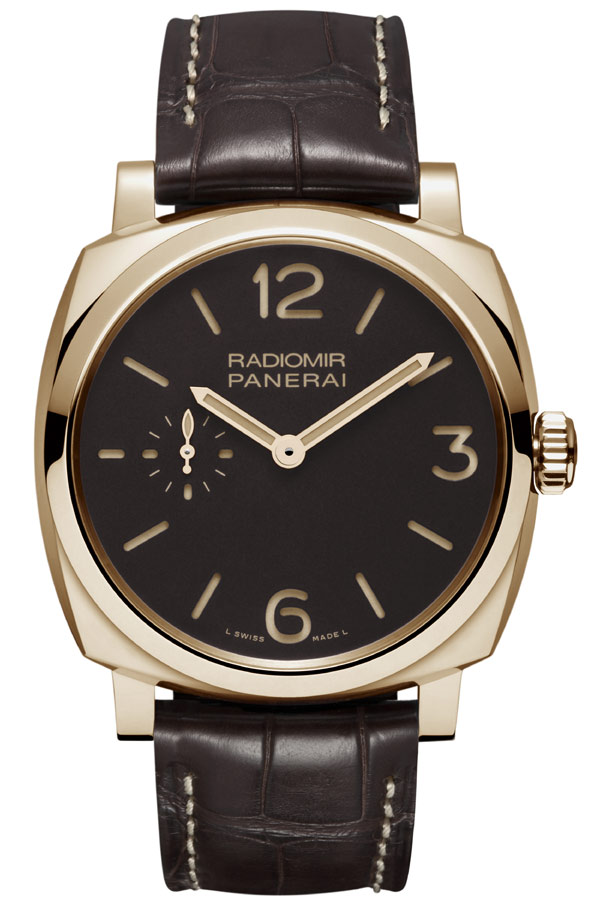
 'Taken 2' grabs movie box office crown
'Taken 2' grabs movie box office crown
 Rihanna's 'Diamonds' tops UK pop chart
Rihanna's 'Diamonds' tops UK pop chart
 Fans get look at vintage Rolling Stones
Fans get look at vintage Rolling Stones
 Celebrities attend Power of Women event
Celebrities attend Power of Women event
 Ang Lee breaks 'every rule' to make unlikely new Life of Pi film
Ang Lee breaks 'every rule' to make unlikely new Life of Pi film
 Rihanna almost thrown out of nightclub
Rihanna almost thrown out of nightclub
 'Dark Knight' wins weekend box office
'Dark Knight' wins weekend box office
 'Total Recall' stars gather in Beverly Hills
'Total Recall' stars gather in Beverly Hills
Time travels through design and art
Updated: 2013-03-31 08:21
By Gan Tian (China Daily)
|
||||||||
|
 Damien Hirst gets his inspiration from black Panerai watches. Photos Provided to China Daily |
The entrance to O'Clock Time Design, Design Time, an art exhibition related to timepieces, is narrow and dim. Ceilings and walls have rough and uneven surfaces. Walking through, visitors feel as if they are walking through a time tunnel.
Featuring 68 art pieces, the exhibition is jointly presented by Triennale Design Museum and Italian Cultural Institute in Beijing. It inaugurated in Milan, before meeting China's audiences at Beijing's CAFA Art Museum recently.
British artist Damien Hirst used dials of watchmaker Officine Panerai watches to create two paintings, with shining bright color blocks and stripes to form the shape of a sunflower. He used spin painting technique in his works.
"The watches are timeless and I made this spin painting using black Panerai watch faces without hands, in the pattern of sunflower seeds. I hope the painting makes you think, we are here for a good time, not a long time," Hirst says.
Marti Guixe's work is named Time to Eat. It is a wooden clock, with a small pendulum. But, there are no numbers and hands on the face, only several holes.
Incorporating special technology, the clock emits different smell during mealtimes to tease the senses and acts as a reminder. For example, at 9 am, it sends out the smell of omelet to remind the user to have breakfast; beef smell during lunch at 1 pm; and tuna steaks during supper at 10 pm.
This exhibition is not only about the history of dials, watches and clocks. Curators Silvana Annicchiarico and Jan von Rossem wrote the concept of the exhibition as:
"O'clock thinks deeply about the relationship between time and design. But it is not an exhibition with a historical approach. It does not seek to document the history of timekeeping diachronically, nor the relationship that the masters of design have had, over time, with the instruments, from calendars to clocks, used for measuring time."
Laura Bethan Woods' works are good examples. She has created a series of teacups, named Stain.
The printed patterns on the teacups become more obvious, if these teacups are used more frequently. They will become a finished pattern of birds, flowers, or regular hexagons, after they are used for a long time. In this way, these products combine the beauty of a visible image and invisible time.
Artists Noa Ikeuchi and Tommaso Nani share the same idea. Their art piece is named Seed, featuring a small white broken porcelain plate with a very delicate seed in the center. They say seeds may be able to break the plate, but it takes a long time for them to grow.
The exhibition itself plays with the concept of "time". It has an optional "fast track" entrance, which takes inspiration from the airport. In the airport, if a person has the privilege to use "fast lane", he or she can save time.
But, if a visitor uses "fast track" entrance in this exhibition, he or she can only see a rapid summary, or a small part, of the exhibition. It tries to convey the idea that in this fast-paced modern society, people often choose to fast track to save time, but neglect the more beautiful things in life.
gantian@chinadaily.com.cn
Most Viewed
Editor's Picks

|

|

|

|

|

|
Today's Top News
Boston bombing suspect reported cornered on boat
7.0-magnitude quake hits Sichuan
Cross-talk artist helps to spread the word
'Green' awareness levels drop in Beijing
Palace Museum spruces up
First couple on Time's list of most influential
H7N9 flu transmission studied
Trading channels 'need to broaden'
US Weekly

|

|








